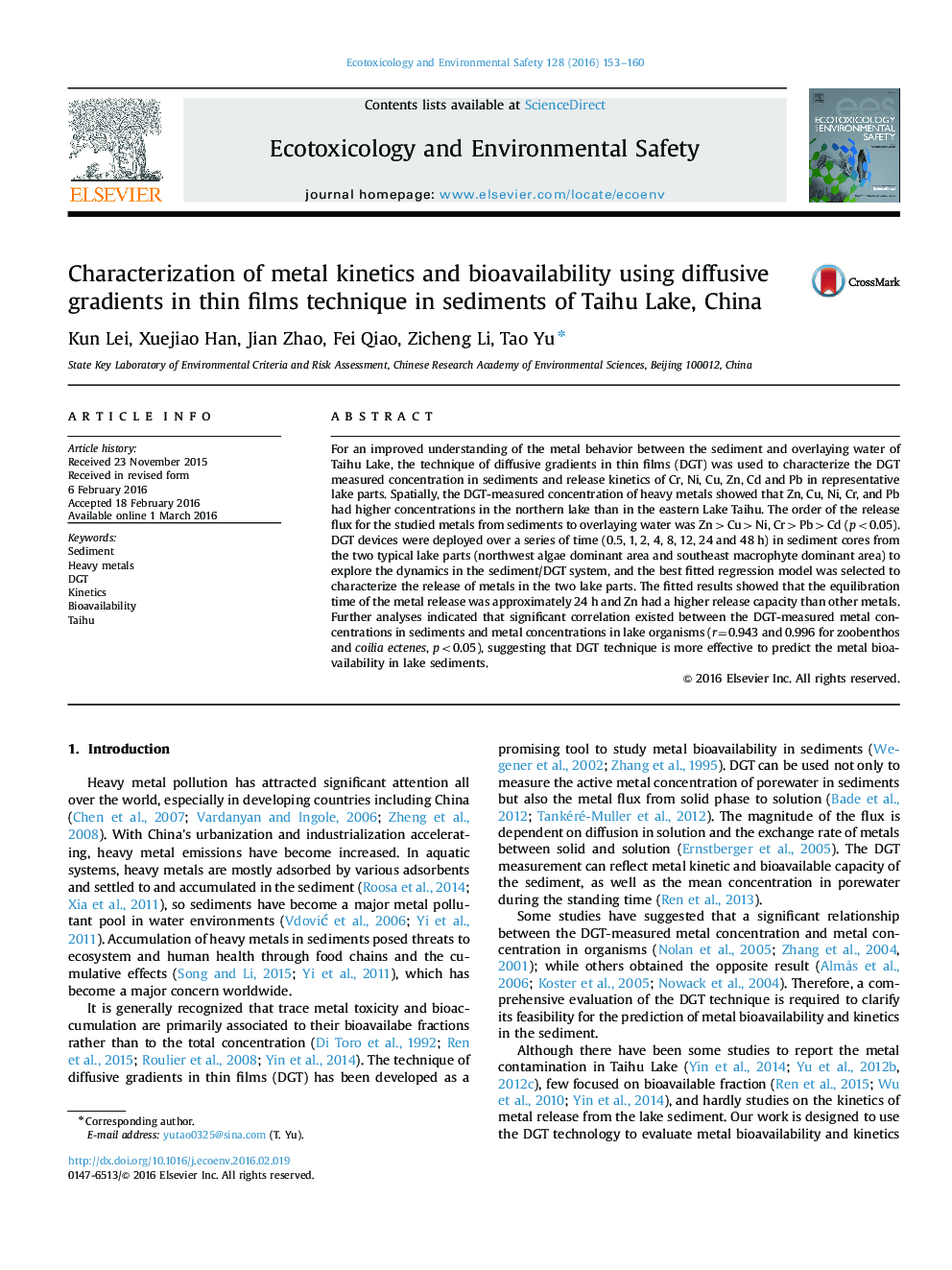| Article ID | Journal | Published Year | Pages | File Type |
|---|---|---|---|---|
| 4419348 | Ecotoxicology and Environmental Safety | 2016 | 8 Pages |
•DGT was used to characterize the metal bioavailability in Taihu sediments.•Kinetics of metal release from sediment was characterized for typical lake parts.•Release flux of metals from sediment to water was calculated.
For an improved understanding of the metal behavior between the sediment and overlaying water of Taihu Lake, the technique of diffusive gradients in thin films (DGT) was used to characterize the DGT measured concentration in sediments and release kinetics of Cr, Ni, Cu, Zn, Cd and Pb in representative lake parts. Spatially, the DGT-measured concentration of heavy metals showed that Zn, Cu, Ni, Cr, and Pb had higher concentrations in the northern lake than in the eastern Lake Taihu. The order of the release flux for the studied metals from sediments to overlaying water was Zn>Cu>Ni, Cr>Pb>Cd (p<0.05). DGT devices were deployed over a series of time (0.5, 1, 2, 4, 8, 12, 24 and 48 h) in sediment cores from the two typical lake parts (northwest algae dominant area and southeast macrophyte dominant area) to explore the dynamics in the sediment/DGT system, and the best fitted regression model was selected to characterize the release of metals in the two lake parts. The fitted results showed that the equilibration time of the metal release was approximately 24 h and Zn had a higher release capacity than other metals. Further analyses indicated that significant correlation existed between the DGT-measured metal concentrations in sediments and metal concentrations in lake organisms (r=0.943 and 0.996 for zoobenthos and coilia ectenes, p<0.05), suggesting that DGT technique is more effective to predict the metal bioavailability in lake sediments.
